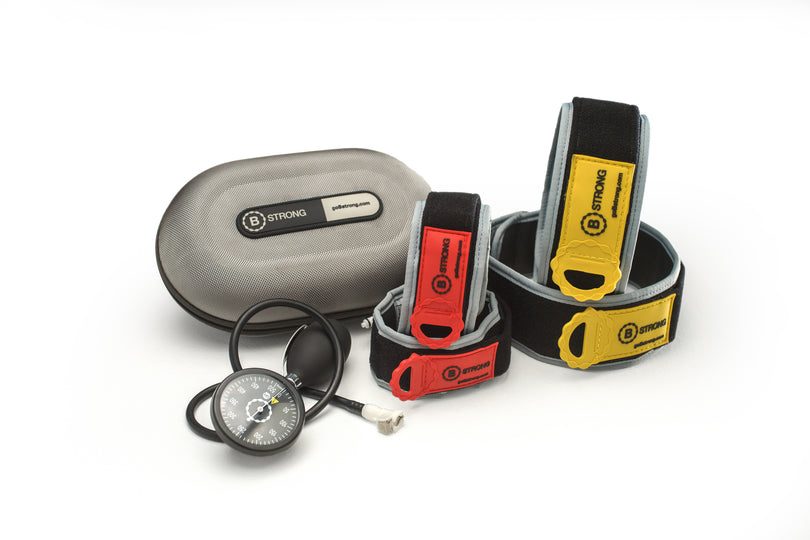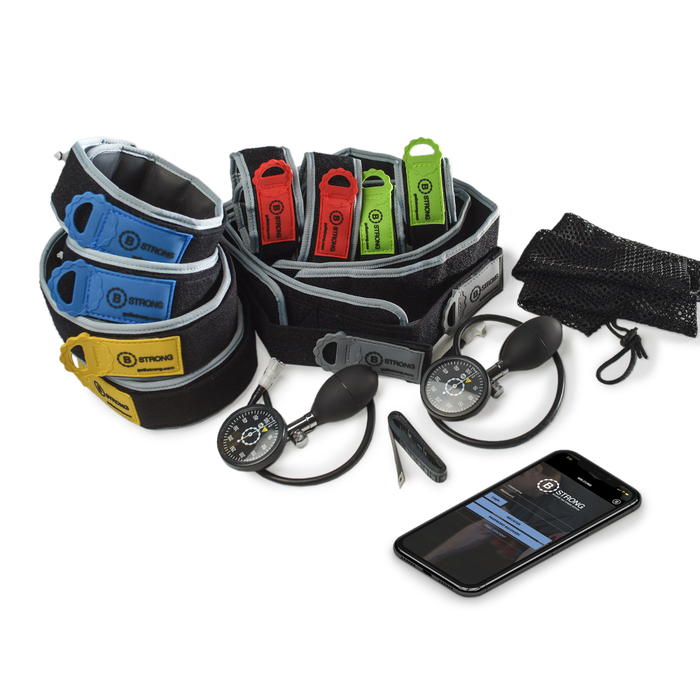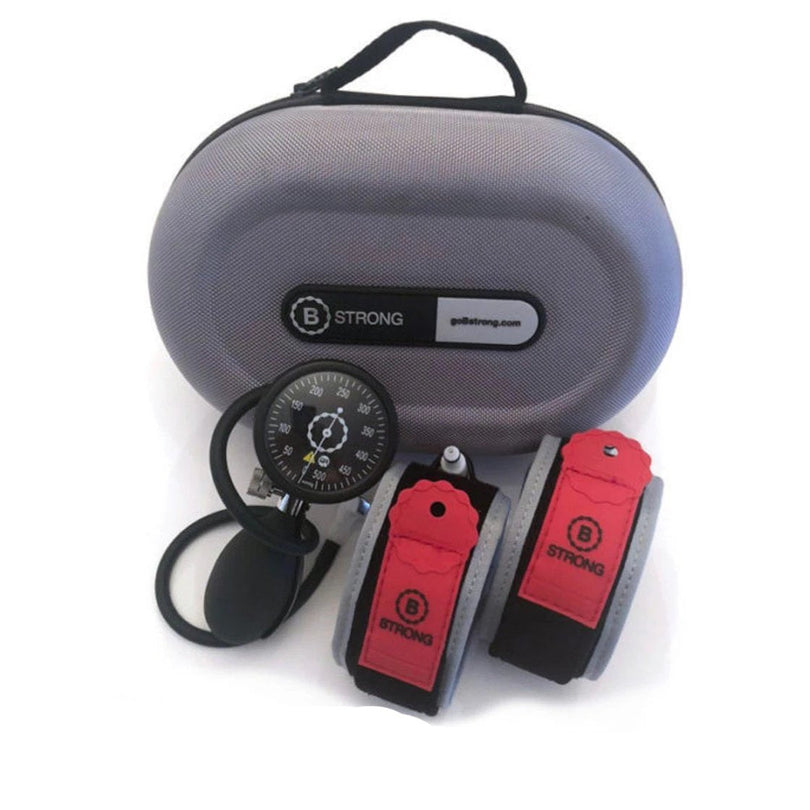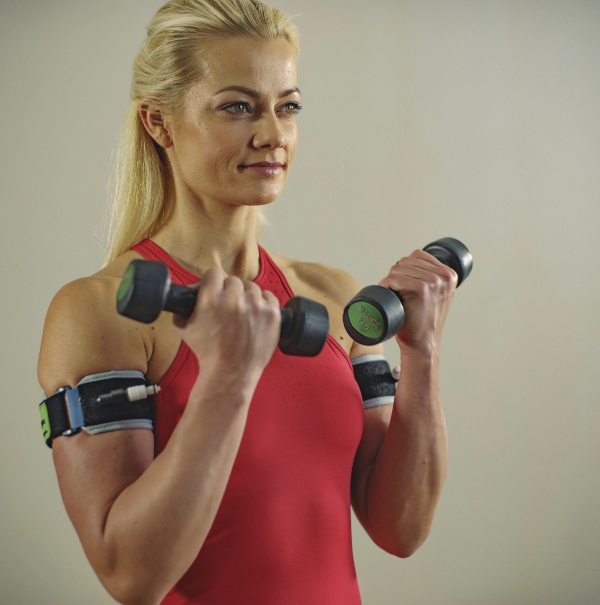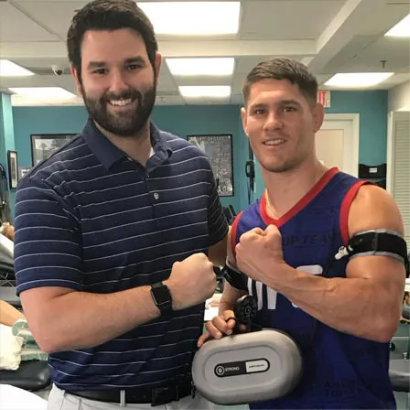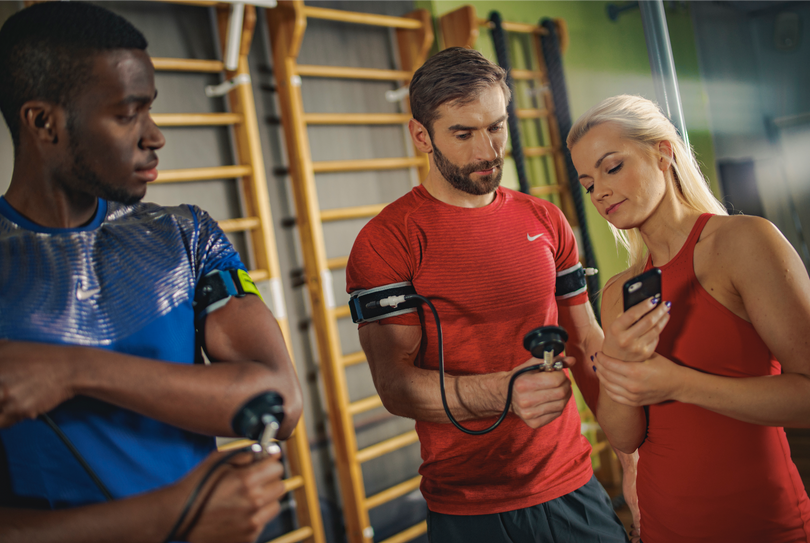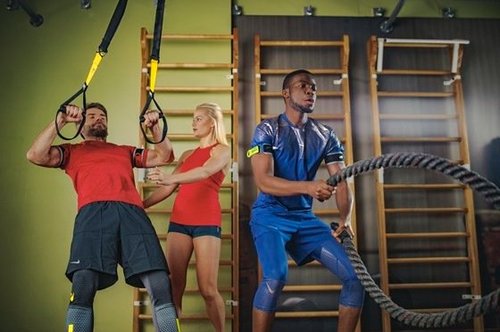Although this study on THE EFFECTS OF BLOOD FLOW RESTRICTION TRAINING ON FUNCTIONAL IMPROVEMENTS IN AN ACTIVE SINGLE SUBJECT WITH PARKINSON'S DISEASE is only a case study (one subject), it reflects the significant intrigue Blood Flow Restriction (BFR) training and its results have in the scientific world. During case studies like this one, researchers often find results of a modality that lead to new studies and findings, as this one did showing reduced restless leg syndrome symptoms with BFR applications.
Abstract
Background: Blood flow restriction (BFR) applied during low intensity exercise produces hypertrophy and strength gains equivalent to traditional training. Previous research has shown the positive effects of BFR on younger and older adults. However, the effectiveness of BFR on subjects with Parkinson's Disease (PD) has not been investigated.
Hypotheses/purpose: The purpose of the study was to determine the effects of BFR on a recreationally active person with PD in regards to functional improvements and safety. The hypothesis was that BFR training will demonstrate improvements in motor function, gait and endurance, while decreasing symptoms associated with Restless Leg Syndrome (RLS) in a subject with PD.
Study design: A single subject, B-A design was used.
Methods: The subject was an active 65-year-old male recreational boxer diagnosed with PD. Baseline data were measured on day one. The intervention (Phase B) consisted of five, two-minute bouts of walking on treadmill with lower extremity BFR cuffs interspersed with 1 minute rest, three times a week for six weeks, at 0 grade incline, and speed of 50 meters/min. The pressure increased from the initial 120 to 160 mmHg at the end of the phase B as per the subject's tolerance. A four-week baseline phase (A) without the BFR intervention followed phase B. The outcome measures which were measured every two weeks over the 10 weeks included: Timed Up and Go Test, 6-Minute Walk Test, 30-Second Chair Stand Test, and the RLS Questionnaire.
Results: All outcome measures steadily improved every two weeks during the six week intervention phase and steadily declined when the intervention was removed during the second four week baseline phase according to visual inspection of the graphed data points.
Conclusion: The subject enjoyed and tolerated the intervention well without any adverse effects. The results were that BFR training can produce functional improvements, reduce restless leg syndrome symptoms and can be safely utilized with a subject with PD who wishes to maintain his ability to remain recreationally active.
SOURCE
- THE EFFECTS OF BLOOD FLOW RESTRICTION TRAINING ON FUNCTIONAL IMPROVEMENTS IN AN ACTIVE SINGLE SUBJECT WITH PARKINSON'S DISEASE - PubMed
- THE EFFECTS OF BLOOD FLOW RESTRICTION TRAINING ON FUNCTIONAL IMPROVEMENTS IN AN ACTIVE SINGLE SUBJECT WITH PARKINSON'S DISEASE - NCBI

